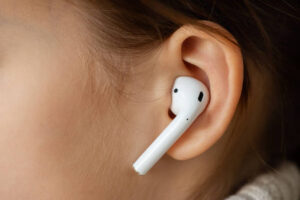
We’ve known for years that loud noises can result in hearing loss, and over the past decade more research has been emerging on how loud noises are influencing the function of our vestibular system. The vestibular system is located the inner ear and it is an integrative component of our complex balance systems. It provides information on the position of your head, orientation, and motion. This system is responsible for maintaining posture and assisting with balance.
Research has indicated that the otolith organs within the vestibular system are typically what is affected first compared to the semicircular canals. The otolith organs are known to sense acceleration changes in horizontal and vertical planes. Damage to these organs can mean an individual’s inability to properly sense postural orientation and they may report a feeling of tilting or a rocking sensation. This inability to properly sense postural orientation can easily increase the risk of falling with basic daily activities such as walking, stair use, and squatting.
So how is this information relevant to everyday life? Well, it indicates the significance of ear protection and the need to monitor exposure to loud noises. This includes ear protection use during occupational exposure which is relevant to those working in noisy factories, operating machinery, firearm use, certain military jobs, and more. In addition, it is important to mention recreational activities that may be placing us at risk for hearing and vestibular damage due to loud noise exposure. Recreational activities such as concerts, fireworks, headphone use for electronic devices, and even crowded areas where sound is magnified are just a few that could pose a concern.
One of the most common exposures to loud noises that I encounter on a daily basis is the use of earbuds or headphones for listening to music, podcasts, and of course used while scrolling through TikTok. Have you ever walked by someone who had their earbuds placed while listening to music and you were able to sing along to the song they are listening? If the sound you are hearing is audible to you, then it is obvious that they are receiving this auditory input at a much higher level. Studies have indicated that increased listening time and frequency at moderate sound levels can result in hearing loss and tinnitus. Given this information and knowing that these hearing loss and tinnitus are frequent among those experiencing vestibular issues, it will be interesting to see how today’s young adults and adolescents present in the future. I personally am interested to see if we see a rise in vestibular related issues due to frequent use of headphones.
Am I saying that listening to music or other audio at certain levels will result in a vestibular issue? No, I am not making that claim. However, I am stating the correlation that exists with the information that we currently know and that I am curious if there is a relationship. I guess until we know for sure, it is always wise to take the precaution of using ear protection and also simply turning down the volume.
What are your thoughts on this topic? We would love to hear your viewpoint!
References:
Dehankar SS, Gaurkar SS. Impact on Hearing Due to Prolonged Use of Audio Devices: A Literature Review. Cureus. 2022 Nov 12;14(11):e31425. doi: 10.7759/cureus.31425. PMID: 36523704; PMCID: PMC9747083.
Farrell, L., & Rine, R. M. Differences in Symptoms among Adults with Canal versus Otolith Vestibular Dysfunction: A Preliminary Report. ISRN Rehabilitation, 2014, 1–10. doi:10.1155/2014/629049
Stewart CE, Holt AG, Altschuler RA, Cacace AT, Hall CD, Murnane OD, King WM, Akin FW. Effects of Noise Exposure on the Vestibular System: A Systematic Review. Front Neurol. 2020 Nov 25;11:593919. doi: 10.3389/fneur.2020.593919. PMID: 33324332; PMCID: PMC7723874.
Widen SE, Båsjö S, Möller C, Kähäri K. Headphone listening habits and hearing thresholds in swedish adolescents. Noise Health. 2017 May-Jun;19(88):125-132. doi: 10.4103/nah.NAH_65_16. PMID: 28615542; PMCID: PMC5501022.
